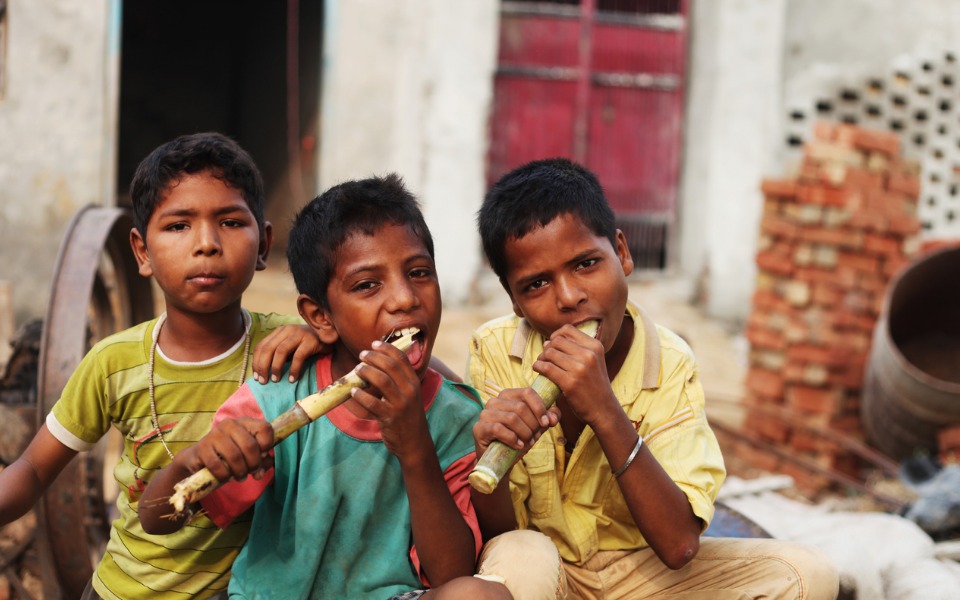
Bengal children fight malnutrition as COVID halts daily dose of meals

ICDS worker Chaitali Roy was up for a shock when she resumed the door-to-door visit to measure the weight and height of children after over a year of hiatus. The data collection drive and other activities under the Integrated Child Development Services (ICDS), the country’s flagship programme to tackle malnutrition among children in the age group of 0-6 years, had been temporarily suspended since the outbreak of the COVID-19 pandemic in March last year.
The door-to-door survey has resumed in West Bengal in June this year. Since then, many ICDS workers like Roy have reported that the COVID-induced break has deepened the problem of malnutrition among children.
To her dismay, Roy found that at least 10 children surveyed by her turned underweight during the interruption period. “On an average, the weight loss among these children in the past one year was about 500 grams,” said Roy who works at of an Anganwadi centre in Dattan block II of West Midnapore district. She added that the trend is not surprising given the fact that the children are now deprived of the nutritious food given at the schools or the Anganwadi centres, which are yet to open.
Also read: COVID impact: Private schools lost a quarter of students to govt institutions
Under the mid-day meal scheme, the state government is providing take-home packets of two kilos of rice, 300 grams of lentils, 500 gram of soyabean chunks, two kilos of potatoes or chickpeas per month to the children, instead of cooked food. Since September, the government has, however, stopped providing soya chunks.
“Prior to the pandemic, when Anganwadi centres were operational, along with freshly cooked khichdi made with vegetables and soya chunks. Eggs and bananas were also served to schoolgoing children,” Roy said.
There are 1.17 lakh Anganwadi centres across West Bengal to monitor the health of 1.15 crore children. But the temporary closure of the centres has severely impacted their services, which include pre-school education and primary healthcare and nutrition to children under six years of age, nursing mothers and pregnant women. Though the door-to-door survey has started, other activities under the ICDS programme are yet to resume.
The trend of growing malnutrition has been reported by ICDS workers from various parts of the state. In Bankura district’s Raipur block and Ranibandh, 82 and 74 more children were found to be malnourished, respectively. Reports from Hoogly stated, in the district’s Goghat II development block alone, 72 children have been added to the list of malnourished.
ICDS worker Aparna Bhattacharya from Jhargram district’s Belpahari block said the trend is almost the same everywhere, adding that even in her area the number of malnourished children has increased. She pointed out that one of the reasons was that most poor families utilise the take-home food packets provided to the children as family ration.
Paschimbanga Rajya ICDS Karmi Samiti, the association of the ICDS workers in the state, had recently urged the State’s Women and Child Development Department to resume serving cooked food instead of distributing dry ration to ensure that targeted beneficiaries get the requisite nutritious meal. The department shot down the proposal, fearing it would spread COVID-19.
Though comprehensive state-wise data of the latest worrying trend is not available with the state women and child development department, an official of the department said they had been getting such reports from various ICDS district coordinators.
Also read: Malnutrition worsened in key states during last five years: NFHS survey
The UNICEF had, last year, warned India that the COVID-19 pandemic could increase malnutrition among children in the country. “As far as malnutrition in India is concerned, a Lancet study last year estimated that two-thirds of the 1.04 million deaths in children under five years in India is still attributable to malnutrition. And during COVID-19, it may increase by 10-20 per cent,” Arjan De Wagt, Chief of Nutrition, UNICEF, India, said.
According to the National Family Health Survey 2019-20, 32.2 per cent of children in West Bengal are underweight. “This may further increase if the nutrition programme in the state does not resume in full swing,” said Roy.


